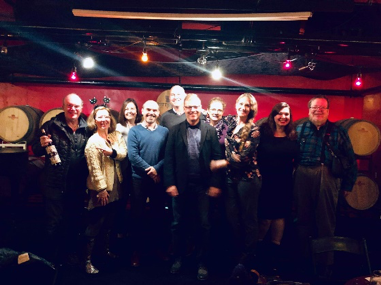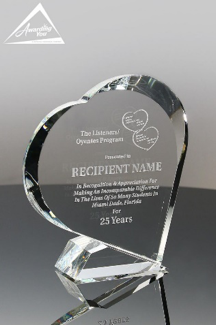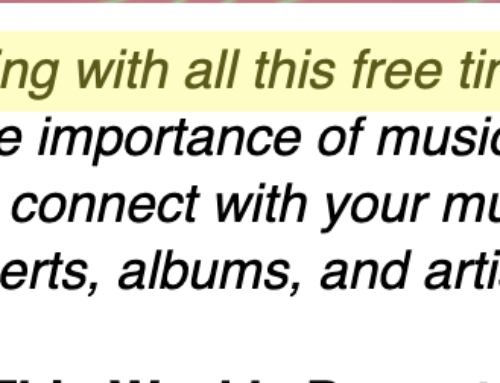 Guest Post by Paula Newbaker
Guest Post by Paula Newbaker
Volunteering is good for everyone! Your nonprofit, your employees, the cause and the volunteers themselves!
In fact, it has been scientifically proven that volunteering is good for your health. Evidence of volunteerism’s physical effects can be found in a study from Carnegie Mellon University, published in 2013 in Psychology and Aging. Adults over age 50 who volunteered on a regular basis were less likely to develop high blood pressure than non-volunteers.
A study released by Johns Hopkins University in 2009 revealed that volunteers increased their brain functioning. Volunteer activities get you moving and thinking at the same time as well as reduce stress levels. By savoring your time spent in service to others, you’ll feel a sense of meaning and appreciation—both given and received—which can be calming.
So one literally does “Keep calm and volunteer!”
Whether your organization is large or small, chances are that you will have to work with volunteers at some point.
How does a nonprofit properly communicate with these wonder-people?
So let’s keep your volunteers happy and let them help you toward your greater goals.
 1. Develop a specific, actionable plan.
1. Develop a specific, actionable plan.
Detail it on charts, binders, in online organizational tools and anywhere easily seen. This is true both for long-term planning and for one-off events. Volunteers need as much detail as possible in order to effectively do their jobs.
For example, on an event day, be sure that they know where they have to be when, that they have all of the tools they need for the day, that they know their individual assignment, know where to find you at all times, know where to go to rest, etc. A daily timetable, or “tic-toc,” will keep them on track and informed. This is an example of a Center for American Progress, a liberal think tank in Washington, D.C., tic toc for a special event.
2. Stay connected while not actually working on a volunteer project.
This is the start of building a real community. And it’s easy today. Of course, you will be communicating on social media. Make it interesting and fun, and use your best content writing strategies to keep them engaged. Talk about the volunteers themselves. Facebook and LinkedIn groups are wonderful for keeping in touch during “off” times. It’s private, member volunteers can speak openly, great ideas are generated and member volunteers often start to become true friends.

3. Develop a sense of community.
Of course, the real sense of community is built off-line. A music organization in Pittsburgh, PA, the Pittsburgh New Music Ensemble, has the wonderful colors of Lime and Black. They formed a top volunteer group, the “Key Limers,” who meet in a #LimeMeetup socially to attend all kinds of arts events in the city and personalized events in members’ homes. They meet pre- or post-event for food and cocktails, sometimes wearing their lime green. They become a live, walking promotion for the group, and can become spokespeople. The director also sent individual postcards to the Key Limers, while on vacation, thanking them for their dedication. These types of deep involvements can lead to volunteers often giving even more time, which can lead to being donors, which can lead to them eventually becoming board members. It’s long-term relationship-building at its best.
 4. Show and share the successes of the organization.
4. Show and share the successes of the organization.
Post a big thermometer in a visible area, on the website, and through social and digital media to show how much money has been raised. Tell stories online and in-person about a child whose life has been impacted, a dog who was saved from the kill shelter or an artist who got to attend a career-changing conference. It’s all about personal stories. This photographer took things one step further as he turned sick children into Justice League Superheroes! (Pictured here Sofie Loftus as Wonder Woman.) Volunteers get to see the work they are doing. They know the impact they are having.
 5. Training. Train, train, train your volunteers.
5. Training. Train, train, train your volunteers.
Online or offline training depends on what you are training for and the specific needs/infrastructure of your organization. Invest in your volunteers and they will invest in you. There is docent training in museums. If your volunteers work in hospitals, with pets, in foodbanks or in any other situation where they are working hands-on with the public, the training will be invaluable. Give them binders, online tools, direct access to your leaders … resources of all kinds. Volunteer hub has some best practices.
 6. Ensure that everyone is aware of common goals.
6. Ensure that everyone is aware of common goals.
Make lists of your nonprofit goals. Make another list comparing how these goals may dovetail with volunteers’ personal goals. Volunteers have a personal interest in your nonprofit. Perhaps a family member has chronic illness. Your goal of getting people to a better health outcome is the same as theirs. Reinforce this. One Parent Teacher Organization shares these reasons to volunteer with them. The organization and parent’s goals are very similar!
7. Inspire them with the mission of the cause.
It is the cause that motivates most volunteers. Use your mission statement and specific cause to uplift, support, and spark your volunteers. Ensure that it is seen and understood. Make it visible online and offline. The more times volunteers see a message, the more it becomes a part of their life. You are changing their lives as much as they help to change the lives of your beneficiaries. At the YMCA, we are strengthening our community — in mind, body and spirit — and it is our cause. Small communities, and even bigger cities, depend on the “Y” for many resources, and their mission is well-known. The volunteers feel this.
 8. Reward them.
8. Reward them.
We are all familiar with awards and award dinners, swag bags, food, etc. And they are important. But there is so much more to rewarding your volunteers. Give simple shout-outs on social media. Take them to a casual lunch or coffee. Write them REAL thank you notes. Shake their hand after an event and tell them, “Good job. We are glad you are here.” Personalize your thank yous in unique ways. Try creating an email campaign about the impact that volunteers have in your organization. Send this to your volunteer list over a few weeks. Just make sure you include a thank you message at the end of each one. Thank your volunteers by telling them a bit more about the impact they are contributing towards. A detailed impact report will validate the time and effort that your volunteers put into your organization. Write/produce a video about a volunteer or group of volunteers in a newsletter or in social media. You can keep track of volunteer hours through this amazing app, and they receive benefits for logging in certain numbers of hours. Volunteer appreciation can go a long way.
Volunteering really CAN make the world go round. Let your volunteers know.
You make a living by what you get. You make a life by what you give.” ~Winston Churchill
Thanks to: The Smithsonian Institution, HubSpot, the Center for American Progress, Kars4Kids, the Pittsburgh New Music Ensemble, photographer Joss Rossi, and the organizations with links for providing background research. And thanks to all of the VOLUNTEERS WHO MAKE IT HAPPEN!
 Paula Newbaker is a senior level communicator currently based in Pittsburgh, PA where she consults for non-profits. Spending most of her career in Washington, D.C., her background includes work for a wide range of non-profit organizations, trade associations and government agencies. She is an active speaker and gives workshops for other non-profits and university communications students on the subjects of non-profit marketing and women’s leadership. She believes in the “Three C’s” in all life endeavors … Creativity, Collaboration, Communication.” Connect with her on LinkedIn.
Paula Newbaker is a senior level communicator currently based in Pittsburgh, PA where she consults for non-profits. Spending most of her career in Washington, D.C., her background includes work for a wide range of non-profit organizations, trade associations and government agencies. She is an active speaker and gives workshops for other non-profits and university communications students on the subjects of non-profit marketing and women’s leadership. She believes in the “Three C’s” in all life endeavors … Creativity, Collaboration, Communication.” Connect with her on LinkedIn.









Leave A Comment